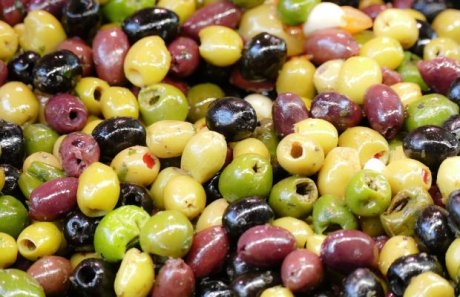The Long & Rich History of Olives
Olives are cultivated on olive trees, which are evergreen trees or bushes that are native to the Mediterranean region but are also found in Africa and Asia. Olive trees are also found in the United States. These trees are quite small and squat, and they rarely grow taller than 8 to 15 metres, which is quite short, and their trunks are frequently twisted. Their long life span is due to the fact that they are drought resistant and very seldom contract diseases; they are also resistant to fire. One of the world's oldest olive trees, thought to be more than 2000 years old, may be found in Bar, Montenegro, where it is one of the world's oldest olive trees. When a bus ran over a tree in west Athens in 1975, it uprooted the tree, which was known as Plato's olive tree and was believed to be over 2,400 years old at the time. It is now housed in the agricultural university of Athens, where it is considered a significant historical item.
Did you know that approximately 18 million tonnes were produced worldwide a few years ago, and that the amount is expected to rise in the future, with Spain accounting for nearly 6 and a half million of those totals? This is the most important olive-producing country in the world, with almost 2.5 million hectares of land dedicated only to the cultivation of olive trees. Approximately 95 percent of the world's olives are grown in countries in the Mediterranean region, with Spain alone having a history of olive cultivation that dates back at least two thousand years.
As far back as history can tell, the Roman Empire imported millions of barrels of Spanish olive oil and olives into Italy. This tradition continues today, as Spain continues to be Italy's primary source of these products.
The taste of all olives and olive oil varies depending on where in Spain they are produced, as well as the climate conditions, soil the plant is grown in, and heat, among other factors. They are all known by different names and sold under different names for different types of olives and oils, and only one single type of olive is farmed in a single location. Empeltre, Hojiblanca, Lechin, Picual, Cornicabra, Verdial, Arbequina, Picudo, and other kinds are the most commonly grown and sold olives today. Other varieties include Empeltre, Hojiblanca, Lechin, Picual, Cornicabra, and others. Additionally, black and green olives are available. Normally, olives are harvested when they are in their green state, but they can be allowed to ripen beyond, resulting in a darker, richer color that is known as black olives. Some olives, mainly those sold in tins at the supermarket, are coloured artificially, and these are the ones to avoid.
The production of Spanish olives in Spain is regulated in the same way that all other food production is. They are only interested in the greatest quality olives and olive oil, and they sincerely stand by their reputation for producing a high-grade product that is nothing less than the best in its category. Because their product is of such good quality that it is preferred by the rest of the globe, Spain accounts for roughly a quarter of the world's total olive production.
You might also like:
Comments


